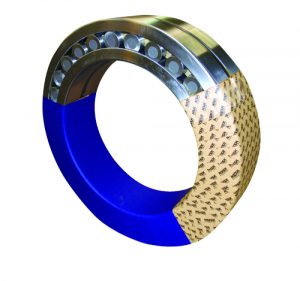

Reconditioning is a timely, reliable and cost-effective means of maintaining productivity.
Machines in heavy industry tend to be high-value assets. Add to this the rising importance of sustainability and the need for cost savings by preserving resources, and the case for using reconditioned bearings becomes clear. But how do you know whether to replace or repair a bearing? Some bearings types are better candidates than others, explains Jason Allen, Strategic Segment Manager, NSK, a global manufacturer of ball and rolling bearings.
MRO: What are the benefits and drawbacks of using a reconditioned bearing?

Jason Allen is a Strategic Segment Manager with NSK.
Jason Allen: Using a reconditioned/refurbished bearing has several benefits. Reconditioning is a timely, reliable and cost-effective means of maintaining productivity and reducing downtime. Reconditioned bearings offer an alternative to the higher cost of newly manufactured bearings as well as offering a potentially shorter lead time with the same warranty as a new bearing. One drawback – not all bearings can be reconditioned.
MRO: What type of savings are involved in a repair and reconditioning process versus a replacement bearing? What’s involved in a typical bearing repair?
JA: A reconditioned bearing is more cost efficient than purchasing new. The level of savings depends on the level of reconditioning that will need to be done. NSK can handle various procedures from a simple pressure cleaning and repack to raceway regrind and manufacturing of new components. Additional cost reductions could be achieved in inventory cost, lead times and freight.
MRO: How do you decide whether you should repair or replace? Is it always economical?
JA: Not all bearings can be reconditioned. Many factors contribute to the potential to recondition, including size, type and level of wear. NSK will inspect and determine if the bearing is a good candidate. Recommendations will then be made on the level of reconditioning that is needed. Utilizing reconditioning can improve profitability through a reduction in unplanned downtime, bearing replacement cost, waste disposal and lead times for bearing replacement.
MRO: Which types of bearings are candidates for refurbishing?
JA: Larger bore bearings are better candidates due to their higher cost. Investing in reconditioning offers greater value. All bearing types, including tapered, spherical, cylindrical and ball, from all manufacturers can be reconditioned. Custom-designed bearings are also often candidates for reconditioning because of their limited availability.
MRO: When a bearing is being reconditioned, what bearings are used in the interim?
JA: Many customers typically have multiple bearings on hand that run on the same application. They use the additional sets while the bearings are being reconditioned – it’s a rotating process.
MRO: Reconditioned or not, what is the best way to extend bearing life?
JA: Bearing end-users should not underestimate the contamination condition. Contamination continuously leads to the decreased performance of bearings as it interferes with the lubrication oil film being developed between the balls and the raceways, creating internal damage. Even minute amounts of contamination will decrease bearing life. End-users should pay close attention to the environment of the application as well as in the bearing handling.
Rehana Begg is the editor of Machinery and Equipment MRO magazine. Reach her at rbegg@annexweb.com.
For information on NSK’s refurbishing programs, contact http://nskamericas.com.

